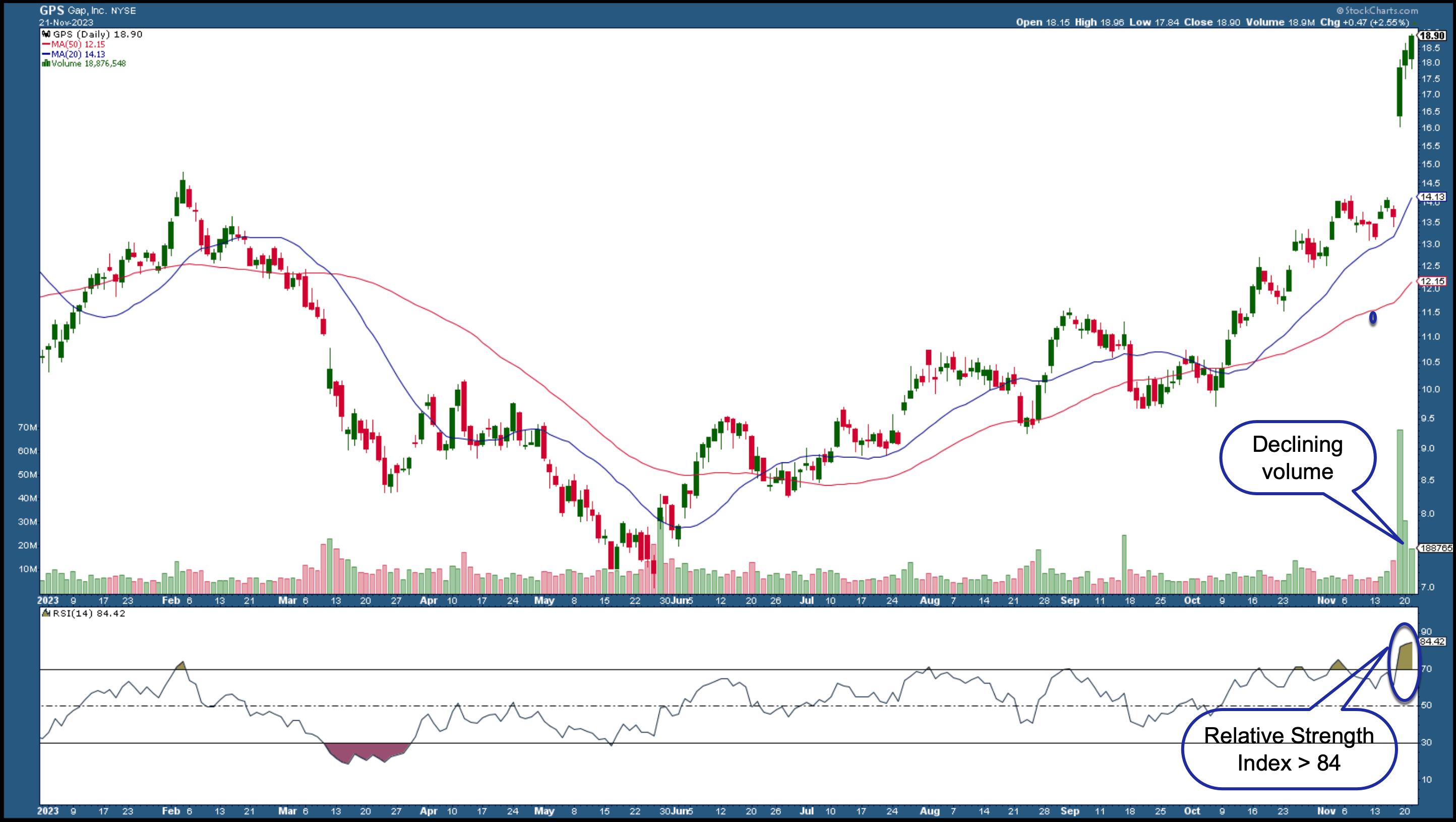
Gap Inc.’s (GPS) blowout earnings report last week not only signaled the end of its summer slumber, but catapulted its share price to two-year highs. Last Friday, its shares jumped more than 30%, opening the day with a massive runaway gap.
For a company whose sales have been declining for years, its reported earnings per share of $0.59 blew the doors off analysts’ expectations of a mere $0.19 per share.
But does this signal a comeback or a blip for Gap’s stock price? Can the stock sustain this momentum and possibly move higher? And if it does continue its trend higher, how high can it go before running into major technical headwinds?
First, let’s look at what happened last week (and the price action leading up to it).

CHART 1: DAILY CHART OF GAP STOCK PRICE. After hitting a low in May, Gap’s stock price started showing signs of life, but that post-earnings runaway gap was something else.Chart source: StockCharts.com. For educational purposes.
Gap’s runaway gap is quite pronounced, as it leapt above its 52-week high. However, both the Relative Strength Index (RSI) and volume are indicating that Gap’s momentum is waning, and rapidly so.
The RSI is giving us a reading over 84—placing Gap’s stock price well within overbought territory. And volume since Friday has pulled back significantly, indicating that the buying activity that gave price its upward momentum is quickly drying up. Both indicate the likelihood of a pullback. And if price does decline, we can expect support at the 20-day simple moving average line, which currently coincides with the top price range prior to the post-earning runaway gap.
Scanning for Stocks Gaining Volume
From Your Dashboard or Charts & Tools tab, scroll to the Sample Scan Library and run the Strong Volume Gainers scan. The scan will filter out all the stocks and ETFs that meet the scan criteria.
But there’s another caveat to consider: According to (technical analyst) Thomas Bulkowski’s studies, runaway gaps toward the upside tend to close (or get filled) only 8% of the time within a one-week period. In other words, stocks that experience runaway gaps to the upside have a tendency to keep running.
And if it does, at what level (or range) might Gap’s stock price hit a ceiling? A weekly chart can tell us.

CHART 2: WEEKLY CHART OF GPS. Over a five-year period, the stock hasn’t demonstrated any significant long-term trends.Chart source: StockCharts.com. For educational purposes.
The price level of $23 marks the beginning of a range (extending up to $25) that will likely serve as major resistance to Gap’s upward trajectory, should it manage to go that high. It served as resistance in November 2019 and repelled repeated attempts to close above it in November 2020, and twice again in September and November of 2021. So this is a price level to watch, especially if you happen to be long the stock.
The Bottom Line
Gap’s near-term outlook is mixed-to-negative, with the company expecting Q4 sales to fall year-over-year. But lower commodity costs and the company’s cost-cutting strategies may be enough to see its profits rise over the coming quarters. From the above charts, you can see the lower and upper limits, where prices are likely to bounce either way.

Disclaimer: This blog is for educational purposes only and should not be construed as financial advice. The ideas and strategies should never be used without first assessing your own personal and financial situation, or without consulting a financial professional.


Comments are closed.